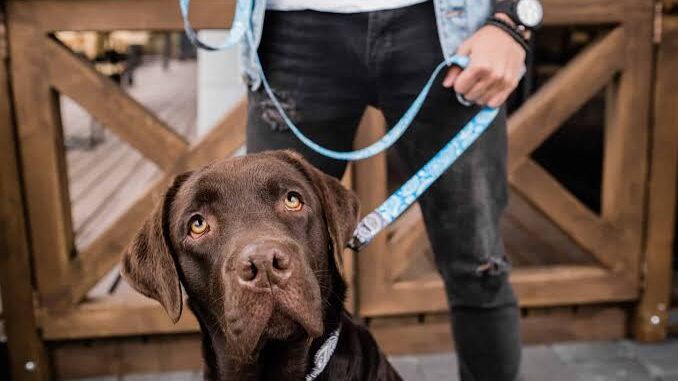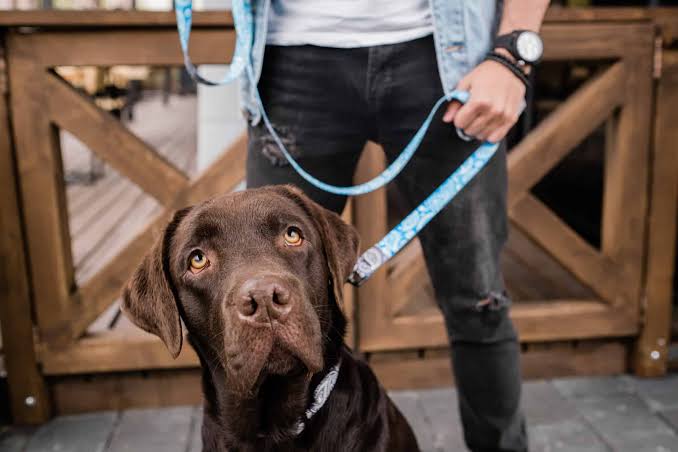
The Best Dog Leashes for Training: Training a dog is one of the most rewarding parts of pet ownership, and the right tools can make all the difference starting with the leash. A good training leash is more than just a means to keep your dog close. It’s a communication tool, a safety device, and a confidence booster for both dog and handler.

With countless types of leashes on the market from retractables and slip leads to long lines and traffic handles it can be confusing to know which one is best for training. This guide breaks it all down, helping you choose the best leash based on your dog’s size, behavior, training goals, and your personal handling preferences.
Why the Right Leash Matters in Dog Training
Dogs learn through consistent feedback, and a well-designed leash allows for clear communication without discomfort or confusion. The right leash:
- Helps maintain control
- Encourages good behavior
- Aids in recall and boundary training
- Prevents pulling and lunging
- Promotes a positive training experience
A poor leash choice can lead to bad habits, frustration, and even injury—both to the dog and the owner.
Types of Dog Leashes for Training
1. Standard Training Leash (4–6 feet)
Best for: Basic obedience training, heel work, and everyday walking
These leashes are made of nylon, leather, or biothane and come in fixed lengths (usually 4 to 6 feet). A standard leash is ideal for:
- Teaching “heel”
- Practicing “sit” and “stay”
- Maintaining close control in busy areas
Pros:
- Simple and effective
- Durable and affordable
- Offers good control
Cons:
- Limited range for off-leash prep or recall training
Top pick:
Max and Neo Double Handle Leash – Features padded dual handles (at 6 ft and 1 ft) for better control during leash training.
2. Long Line Leash (15–50 feet)
Best for: Recall training, boundary work, and desensitization
Long lines give your dog freedom while still being under control. They are especially useful for:
- Practicing “come” and off-leash commands
- Gradually increasing distance while maintaining safety
- Desensitizing reactive dogs at a distance
Pros:
- Great for open field work
- Allows freedom with safety
- Builds strong recall skills
Cons:
- Can tangle easily
- Requires more handling skill
Top pick:
Hi Kiss Long Training Leash (30ft) – Lightweight, strong nylon with swivel clip to reduce tangles.
3. Slip Lead
Best for: Quick control, training corrections, and shelter environments
A slip lead combines leash and collar into one piece. It tightens when the dog pulls and loosens when the dog relaxes.
Pros:
- Quick to put on and remove
- Good for impulse control
- Popular with trainers and rescues
Cons:
- Can cause discomfort or injury if misused
- Not ideal for small dogs or those prone to tracheal issues
Top pick:
Mendota Slip Lead (6ft) – Durable, hand-crafted rope lead with leather accents and adjustable stopper.
4. Martingale Lead
Best for: Gentle correction for dogs that pull or slip out of collars
A martingale lead combines the slip mechanism with a limited choke design, preventing over-tightening. It’s ideal for:
- Dogs with narrow heads (like Greyhounds)
- Gentle leash corrections
- Training without harsh tools
Pros:
- Safer alternative to choke chains
- Prevents backing out of the leash
- Offers control without pain
Cons:
- Not suitable for off-leash training
Top pick:
PetSafe Martingale Leash – Combines nylon leash with martingale collar loop, designed for training walks.
5. Hands-Free Leash
Best for: Jogging, casual leash manners training, and multi-tasking
Hands-free leashes attach around your waist or torso, freeing up your hands while walking or running.
Pros:
- Ideal for training “heel” or focus
- Distributes pulling force
- Great for active lifestyles
Cons:
- Less control in high-distraction situations
- Not recommended for reactive or untrained dogs
Top pick:
Tuff Mutt Hands-Free Bungee Leash – Includes shock-absorbing bungee, dual handles, and waist belt.
6. Traffic Handle Leash
Best for: Urban training, reactive dogs, and high-traffic areas
Traffic leashes are short leashes (1–2 feet) or leashes with a second handle near the clip. They give you instant control when navigating tight spaces or when your dog needs to stay close.
Pros:
- Maximum control in dangerous areas
- Ideal for large or strong dogs
- Good for “focus” work during distractions
Cons:
- Not suited for general walking or recall training
Top pick:
BAAPET Double Handle Heavy Duty Leash – Features padded traffic handle and reflective stitching for night walks.
READ ALSO: How to Stop Your Cat from Spraying
What to Look for in a Training Leash
When choosing a leash, consider the following:
1. Material
- Nylon: Lightweight and affordable, but can burn your hands with sudden pulls.
- Leather: Durable and comfortable, softens with age, but needs maintenance.
- Biothane: Waterproof, strong, and flexible—great for all-weather training.
2. Length
- Short (1–2 ft): For tight control in busy environments
- Standard (4–6 ft): For everyday use and basic training
- Long (15–50 ft): For recall and advanced training
3. Hardware
- Look for strong, rust-proof clips (like stainless steel or brass)
- Swivel clips reduce tangling
4. Comfort
- Padded handles protect your hands
- Dual-handle designs offer versatility
Leash Training Tips for Success
- Use treats and praise generously – Reward good behavior consistently.
- Avoid jerking or yanking – Instead, stop and wait when your dog pulls.
- Train in low-distraction areas first – Gradually build to more challenging environments.
- Be consistent – Use the same commands and leash technique every session.
- Don’t rely on the leash alone – It’s a tool, not a substitute for proper training and bonding.
FAQs
What’s the best leash for a puppy in training?
A standard 4–6 foot nylon or biothane leash is best for early obedience and leash manners. Avoid retractables and long lines until your puppy learns basic control.
Can I use a retractable leash for training?
Retractable leashes are not recommended for training. They offer inconsistent feedback, can encourage pulling, and are risky in high-distraction or crowded areas.
What leash is best for recall training?
A long line leash (15–30 feet) is ideal for teaching recall in open, safe areas. It allows freedom while maintaining control during training.
My dog pulls constantly—what kind of leash helps?
Try a standard leash with a front-clip harness or a martingale lead. Pair with training focused on rewarding loose-leash walking and stopping when your dog pulls.
Are slip leads harmful?
Slip leads are safe when used correctly and under supervision. They’re not meant for casual use or dogs prone to neck issues. Always seek professional guidance when using correctional tools.
What leash should I use for off-leash prep?
A long line leash is the safest way to simulate off-leash freedom while still practicing control and recall before going fully off-leash.
Is biothane better than nylon?
Biothane is more durable, waterproof, and easy to clean than nylon. It’s great for training in wet or muddy environments.
Leave a Reply
You must be logged in to post a comment.